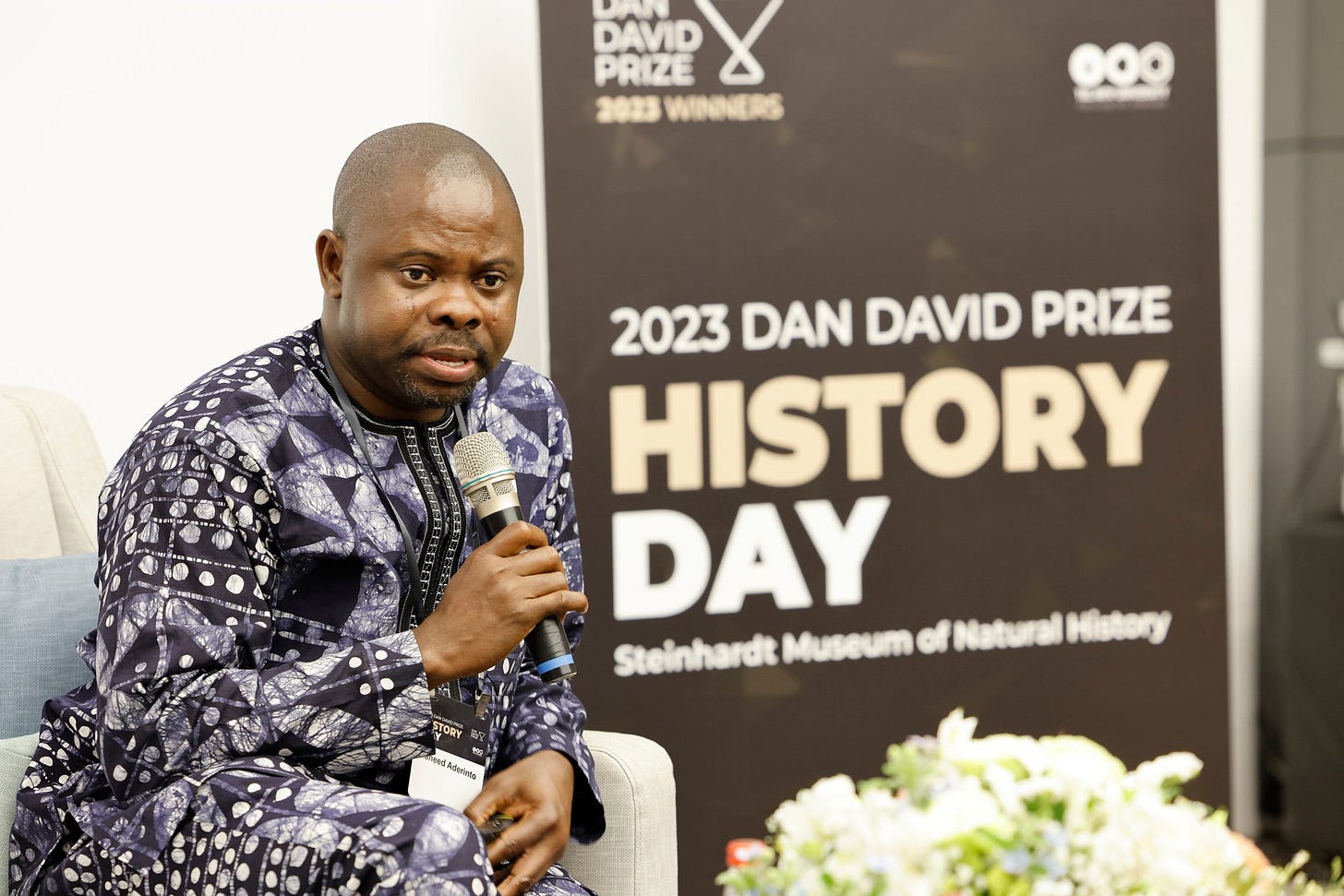Photo credits: Saheed Aderinto’s website
I recently saw Professor Saheed Aderinto’s pilot music documentary, Mr Fuji: Barry Wonder, and it was an overwhelming experience, in a good way. It is a well-deserved and wholesome profile of the music genre Fuji and its frontal innovator, Barrister Sikiru Ayinde, aka Mr Fuji.
This timely intervention from a seasoned academic, Professor Saheed Aderinto, who is vocal about his love for Fuji and his preoccupation with Abula, provides us with a tender story explored with academic rigour and profound cultural understanding. His scholarly approach to the subject matter is sure to stimulate your intellectual curiosity.
Aderinto, like Barrister, is from Ibadan, an essential hub for Fuji music, both in terms of fan base and a sizable number of Fuji musicians domiciled in the ancient city. Aderinto approaches the Fuji genre from awe, fascination, and love. This film is a layered love letter to the genre. Screen time is devoted to talking head experts who explore salient aspects of the syncretic Yoruba culture that birthed Fuji, the places that nurtured it, and most importantly, the people who identify with this music as an integral part of their lives.
At the risk of sounding simplistic, Fuji is our Hip-Hop. Here’s why. Fuji music began its journey to popular consciousness in the late 1960s, making it slightly older than Hip-Hop. Its birthplace is not quite as apparent as the Bronx, New York, is for Hip-Hop. Like Hip-Hop, Fuji came alive during the reign of other popular music. Before Fuji in post-colonial Nigeria, there was Highlife, Juju, Apala, and Sakara music.
Fuji’s earliest influences were found in Were and Ajisaara Islamic traditions. Like Muezzins deployed their melismatic vocals to call the Muslim faithful to prayer, the Ajisare practitioners, usually young men, call the faithful during the annual Ramadan fast to eat Suhr. Fuji’s journey to becoming mainstream is inexplicably linked to the Nigerian Civil/Biafran war. Barrister was a clerk in the Nigerian army moonlighting as a musician. His vocal ability had been tested in several ajisaari competitions, where he almost emerged as the winner. There are several story strands to how music steeped in Islamic tradition broke away to court a secular company. Recording companies like TYC were involved. Visionary and young musicians were involved, like Barrister and his younger contemporary Kollington Ayinla (aka Kebe Kwara), who were motivated to disrupt the status quo. There are also show promoters, music journalists and larger than life impresarios like Ajala, who initially promoted Fuji music and Barrister until they fell out spectacularly. All these stories are explored with enthusiasm and intrigue, but the primary focus is Mr Fuji. His challenging and humble early life. He was a songbird with an extraordinary gift of language who saw Sakara and Apala as protogenres that could be innovated into new realms.
I love the myths. Myths are commissioned to tell the stories of great men. One such myth is that Ayinde’s songs visit him in his dreams. We have hardly improved beyond Freud’s musing on dreams. With Barrister, dreaming about songs means he had unfettered access to his subconscious as a writing camp.
Another aspect the documentary explored is the relationship between Barrister and his drummers. By design, most West African musical genres are drumming genres. By accepting the nuances of the Yoruba talking drum and elevating it above the Sakara drum, Barrister gave Fuji another superpower. The documentary's exploration of Barrister’s personal life, his dress sense, and his love of women and children is sure to make you feel connected and empathetic.
Mr Fuji’s life ended abruptly, aged 62, in St Mary’s Hospital, Paddington, but his music continues to garner an audience. The documentary's celebration of Fuji's legacy is sure to evoke a sense of nostalgia and appreciation. Aspects of Fuji's music have been transported into Afrobeats, with top-tier artists like Burna Boy, Asake, and Seyi Vibez relying on his legacy, his techniques, and his discography.
Kudos to Professor Aderinto.



Good writeup, boss. I can't wait to see this documentary.
Bàbá SA! 😁